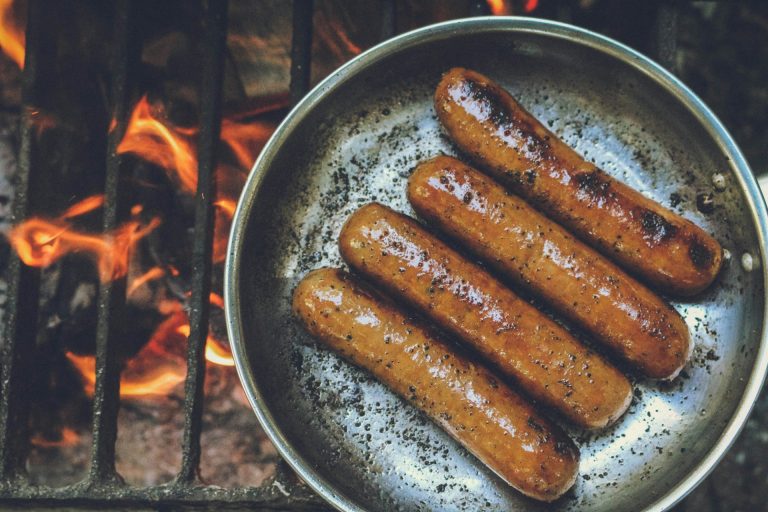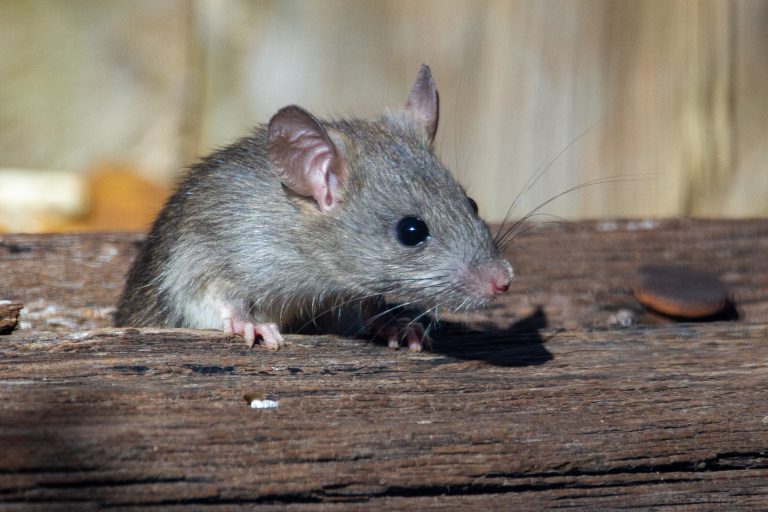Do Pine Cones Explode in Fire? The Facts + Why.
Pine cones are a common and beautiful natural decoration used in outdoor fire pits, camping trips, and even indoor fireplaces. However, an age-old question has remained unanswered for many: do pine cones explode in fire?
In this section, we will explore the truth about this phenomenon and unravel why pine cones behave the way they do when exposed to fire. We’ll provide you with a comprehensive understanding of pine cones and their relationship with fire, including precautions to take and the science behind pine cone explosions.
Key Takeaways
- Pine cones have the potential to explode in fire
- Their composition and the release of heat contribute to explosive reactions
- Moisture content in pine cones affects their behavior in fire
- Following safety measures can prevent accidents
- Pine cones play important roles in nature beyond being a fire hazard
Understanding Pine Cones and their Composition
Pine cones are fascinating natural structures that have been around for millions of years. They come in all shapes and sizes and are an important part of many ecosystems. To better understand why pine cones can explode in fire, we need to take a closer look at their composition.
Firstly, pine cones are made up of scales, which are arranged in a spiral formation around a central core. These scales protect the seeds inside the cone and play a crucial role in reproduction.
The scales are also covered in a resin which helps to protect the cone from insects and disease. This resin is highly flammable and can contribute to the explosive reaction when exposed to fire.
In addition to the scales and resin, pine cones also contain seeds and a woody core. The seeds are located at the base of each scale and are released when the cone dries out or is heated. The woody core provides structure and support for the scales.
The Different Parts of a Pine Cone:
Part |
Description |
|---|---|
Scales |
Protective layers arranged in a spiral around the cone |
Resin |
A sticky substance that covers the scales and protects the cone from insects and disease |
Seeds |
Found at the base of each scale, released when the cone dries or is heated |
Woody core |
Provides structure and support for the scales |
Overall, understanding the composition of pine cones is crucial to understanding why they can explode in fire. The combination of scales, resin, seeds, and the woody core all contribute to the explosive reaction. In the next section, we’ll explore what happens to pine cones when they are exposed to fire in more detail.
What Happens to Pine Cones in Fire?
When pine cones are exposed to fire, they undergo a series of changes and reactions. The heat causes the cones to open up, releasing the seeds inside. This mechanism is designed to help the pine tree reproduce and spread its seeds over a wider area.
However, the release of the seeds is not the only thing that happens when pine cones are exposed to fire. The high temperatures cause the resins and volatile oils inside the cones to vaporize and expand rapidly, creating pressure inside the cone. This pressure builds up until the cone explodes, sending shrapnel and debris flying in all directions.
Fun fact: Pine cones can explode with a force of up to 200mph!
The explosive reaction of pine cones in fire is not only visually striking but can also pose a danger to people and property. That’s why it’s essential to take proper safety precautions when using pine cones in fires, as we’ll explore in section 7.
The Science Behind Pine Cone Explosions
Have you ever wondered why pine cones explode in fire? It turns out there is quite a bit of science behind this fascinating phenomenon.
When pine cones are exposed to heat, the resin inside them begins to melt and vaporize. This process releases volatile gases that build up pressure within the cone. As the heat continues to increase, the cone eventually reaches its ignition point and bursts open, releasing the built-up pressure and sending seeds flying in all directions.
The exact science behind pine cone explosions is complex and involves factors such as the cone’s size, the amount of resin and moisture present, and the intensity of the heat source.
The Role of Resin
Resin, which is produced by pine trees, plays a significant role in pine cone explosions. The resin is highly flammable and is what causes the cone to catch fire in the first place. As the resin heats up, it begins to vaporize and release gases, which contribute to the buildup of pressure inside the cone.
Interestingly, not all pine cones contain the same amount of resin, which means that not all cones will explode in the same way or at the same time.
The Importance of Moisture
Moisture content also plays a crucial role in pine cone explosions. While resin ignites easily, it requires a certain level of moisture to vaporize and release gases. If the cone is too dry, the resin may ignite but not release enough gases to cause an explosion.
On the other hand, if the cone is too wet, the moisture may prevent the resin from igniting altogether. This delicate balance between resin and moisture is what makes pine cone explosions such a unique and fascinating phenomenon.
The Science of Pressure
As the resin vaporizes and releases gases, pressure builds up inside the cone. Once the internal pressure surpasses the cone’s structural integrity, the cone bursts open, releasing the pressure and causing an explosion.
Scientists have discovered that the pressure inside a pine cone during an explosion can be as high as 100 pounds per square inch. This pressure is what propels the seeds out of the cone and into the surrounding area.
Understanding the science behind pine cone explosions can help us appreciate the unique beauty and complexity of nature. However, it’s important to remember that pine cone explosions can also pose a fire hazard, and precautions should be taken when using them in fires.
The Role of Moisture in Pine Cone Explosions
Moisture is a crucial factor in understanding pine cone explosions. As we learned in the previous section, heat drives the explosive reaction in pine cones. However, without moisture, pine cones are less likely to explode in fire.
It’s important to note that not all pine cones are the same. Some species, such as lodgepole pine cones, have a higher moisture content and are more prone to exploding in fire.
So how exactly does moisture contribute to pine cone explosions? When pine cones are exposed to heat, the moisture inside the cone evaporates and turns to steam. This creates a buildup of pressure within the cone, which can lead to an explosive reaction.
On the other hand, pine cones with low moisture content are less likely to undergo this process and are therefore less likely to explode in fire.
Fun fact: Pine cones can actually open and close in response to changes in moisture levels and humidity. This is due to the structure of the cone scales and the way they are attached to the cone.
While moisture plays a role in pine cone explosions, it’s important to note that other factors, such as heat and the cone’s composition, also contribute to the explosive reaction. Understanding all these factors can help us appreciate the beauty and complexity of nature, while also staying safe around fires.
Understanding the Heat Releasing Mechanism
When pine cones are exposed to heat, they begin to dry out and release moisture. The heat also causes the resin within the pine cone to melt, creating a sticky substance that helps to bind the cone together. As the temperature continues to rise, the moisture and resin begin to boil, creating pressure within the cone.
This buildup of pressure can cause the pine cone to fracture and break apart, releasing the built-up moisture and resin in a small explosion. This phenomenon is known as the heat releasing mechanism and is what causes pine cones to explode in fire.
Note: Some pine cones may not explode due to variations in moisture content and resin within the cone. However, it’s best to assume that all pine cones have the potential to react in this way when exposed to fire.
Fire Hazards and Safety Measures
It’s important to be aware of the potential fire hazards associated with pine cones. While they may be beautiful to look at, they can also present dangers when used near fires. Here are some important safety measures to keep in mind:
- Keep a safe distance: When using pine cones for decoration or as kindling, keep them at a safe distance from any open flames or hot surfaces. This will prevent them from catching fire and potentially causing an explosion.
- Don’t leave fires unattended: It’s important to never leave a fire unattended, especially when pine cones are being used. Make sure the fire is properly extinguished before leaving the area.
- Have a fire extinguisher on hand: In case of emergency, having a fire extinguisher nearby can help quickly put out any flames before they spread. Make sure to know how to properly use the fire extinguisher beforehand.
- Be aware of wind conditions: Windy conditions can cause flames to spread quickly, which can increase the risk of pine cones catching fire. Always be aware of the wind conditions before starting a fire.
- Extinguish pine cone fires properly: If a pine cone does catch fire, it’s important to extinguish it properly. Use a bucket of water or sand to put out the flames, and make sure the pine cone is completely cooled down before disposing of it.
By following these safety measures, you can help prevent accidents and ensure a safer experience when using pine cones around fires.
Exploring Other Fire Hazards in Nature
Pine cones are not the only natural objects that can pose fire hazards. In fact, various materials found in nature can present dangers when exposed to fire. It’s important to be aware of these hazards to prevent accidents and ensure everyone’s safety.
Dead Branches and Leaves
Dead branches and leaves can easily catch fire and spread flames rapidly. It’s important to clear your yard regularly, especially during dry months when the risk of fire is higher. Make sure to dispose of dead branches and leaves properly and never burn them close to your home or other structures.
Dry Grass and Weeds
Dry grass and weeds are another common fire hazard. They can easily ignite and spread flames quickly, especially when exposed to hot temperatures and strong winds. To prevent fires, make sure to keep your yard and surrounding areas clear of dry grass and weeds. Use a mower regularly and dispose of the debris in a safe manner.
Bark and Wood Chips
Bark and wood chips can also pose a fire hazard, especially when used as landscape mulch around structures. If these materials are not properly maintained, they can easily catch fire and ignite surrounding structures. To prevent fires, make sure to keep bark and wood chips moist and free from debris. It’s also important to maintain a fire-safe zone around your home with non-combustible materials.
Wildlife
Wildlife can also present fire hazards, especially during dry months when vegetation is scarce. Small animals, such as rabbits and mice, can create nests with dry grass and leaves, which can easily catch fire. To prevent fires, make sure to regularly check your yard and surrounding areas for signs of animal activity. Clear out any dry grass or leaves and dispose of them properly.
Conclusion
Being aware of the fire hazards in nature is crucial to prevent accidents and ensure everyone’s safety. By regularly maintaining your yard and surrounding areas, you can reduce the risk of fires and protect your home and loved ones.
Tips for Safe Outdoor Fires
If you love spending time outdoors around a fire pit, it’s important to prioritize safety. Follow these tips to ensure a safe and enjoyable experience.
- Choose a safe location: Select a location away from any flammable materials, such as dry grass or bushes. Make sure the fire pit is stable and secure to prevent accidents.
- Check for burn bans: Before starting a fire, check the local regulations to ensure there are no restrictions or burn bans in place.
- Never leave the fire unattended: Fires can quickly become uncontrollable, so make sure someone is always watching it. Keep a bucket of water or sand nearby in case of emergencies.
- Avoid using accelerants: Using gasoline or other accelerants to start a fire can be extremely dangerous and lead to uncontrolled flames. Use fire starters or kindling instead.
- Don’t overload the fire: It’s important to maintain a safe fire size and avoid overloading it with too many logs or materials. This can cause the fire to become too large and difficult to control.
- Extinguish the fire: Make sure to completely extinguish the fire before leaving the area. Pour water or sand over the embers and stir the remains to ensure everything is fully extinguished.
Following these tips will help ensure a safe and enjoyable experience around outdoor fires. Remember to always prioritize safety and follow local regulations and guidelines.
The Beauty and Importance of Pine Cones
While pine cones might seem like a mundane or even pesky part of nature, they are actually quite beautiful and play important ecological roles.
Their unique shapes and textures make pine cones a popular material for crafts and decorations. From wreaths to centerpieces, pine cones can add a touch of natural beauty to any space.
But beyond their aesthetics, pine cones are also essential to the health and survival of forest ecosystems. They house and protect the seeds of pine trees, ensuring the continuation of these vital plant species.
In addition, pine cones serve as a food source for a variety of wildlife, from squirrels to birds. They provide important nutrients and sustenance for these creatures, helping to maintain a healthy balance in the food chain.
So the next time you come across a pine cone, take a moment to appreciate its beauty and remember the important role it plays in the natural world.
Extinguishing Pine Cone Fire
Once a pine cone catches fire, it can be challenging to extinguish it as they can continue to burn even after it has been separated from the main fire.
The first rule of thumb when dealing with a pine cone fire is to stay safe. Do not attempt to extinguish a fire that is out of control. If the fire is small and manageable, follow the steps below:
- Use Water: Pour water over the pine cone until it is completely saturated. Keep pouring water until the hissing sound stops, indicating that the fire has been put out.
- Use a Fire Extinguisher: A fire extinguisher can be used to put out a pine cone fire. Aim the extinguisher at the base of the fire and sweep it from side to side until the fire is out.
- Use Sand or Dirt: Sand or dirt can be used to smother the fire. Cover the pine cone with sand or dirt until it is completely covered. Allow sand or dirt to sit for a few minutes to ensure that the fire has been extinguished.
Remember: Always keep a close eye on pine cones and other natural materials when they are exposed to fire. Always have a source of water nearby in case of an emergency.
Conclusion
In conclusion, pine cones can definitely explode when exposed to fire. This phenomenon occurs due to their composition, which causes them to release heat and volatile gases when heated. It’s important to understand the science behind this reaction and take necessary precautions when using pine cones in fires.
While pine cone explosions can be fascinating, they also pose fire hazards. Therefore, it’s crucial to follow safety measures when using pine cones or any other natural materials in fires. Always extinguish fires properly and never leave them unattended.
Despite the potential dangers, it’s also important to appreciate the beauty and ecological significance of pine cones. They play an important role in nature, serving as a food source for wildlife and aiding in the reproduction of coniferous trees.
By understanding the science behind pine cone explosions and taking necessary precautions, we can safely enjoy the beauty and benefits of these natural wonders.
FAQ
Do pine cones explode in fire?
Yes, pine cones have the potential to explode when exposed to fire.
What happens to pine cones in fire?
When pine cones are exposed to fire, they undergo a reaction known as explosive combustion, causing them to burst open and release their seeds.
Why do pine cones explode in fire?
The main reason pine cones explode in fire is due to the high resin content and moisture trapped within the cone. When heated, the moisture turns into steam, building up pressure within the cone and causing it to rupture.
Can pine cone explosions be dangerous?
While the explosions themselves may not pose significant danger, the flying debris and spreading fire can cause potential harm and should be treated with caution.
How can I safely use pine cones in fire?
To use pine cones in a fire safely, it is recommended to dry them thoroughly before use and maintain a safe distance from the fire when throwing them in.
Are there other natural materials that can explode in fire?
Yes, other natural materials like certain fruits, seed pods, or even dry leaves can also explode or release flammable compounds when exposed to fire.
What safety measures should I take when using pine cones in fire?
It is important to have a fire extinguisher nearby, keep a safe distance from the fire, and never throw pine cones directly into an open flame.
How do I extinguish a pine cone fire?
To extinguish a pine cone fire, it is best to use water or a fire extinguisher. Make sure the fire is completely out before leaving the area.
What is the ecological significance of pine cones?
Pine cones play an important role in the reproduction of certain tree species, as they contain and distribute seeds. They also provide food and shelter for various animals.
Can I use pine cones for any other purposes?
Yes, pine cones can be used for crafts, decorations, or as natural fire starters due to their flammable properties.
Can I use pine cones from any type of pine tree?
Yes, pine cones from different types of pine trees can be used in fires, but it’s important to be aware of any local regulations or restrictions on collecting them.






